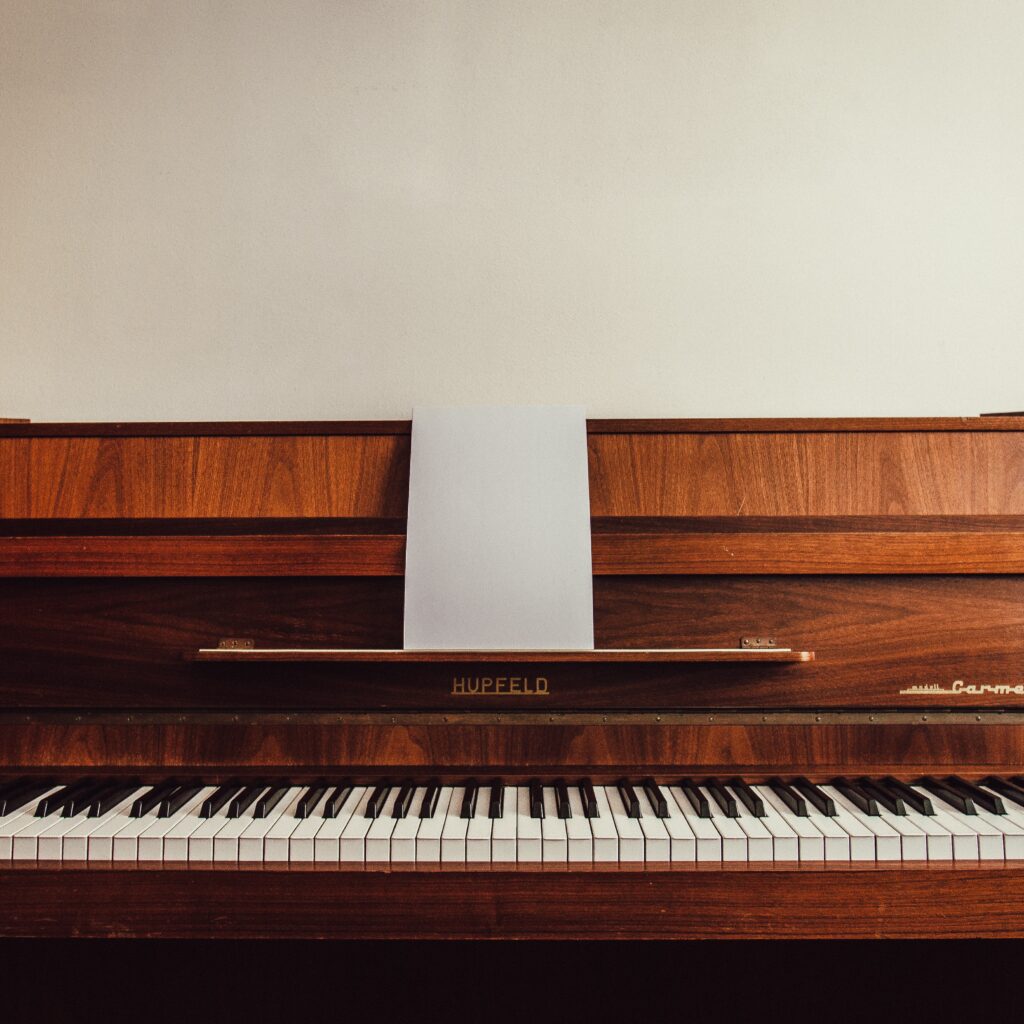If you’re wondering, “What’s a spinet piano?” you’ve come to the right place. This article will serve as your comprehensive guide, providing step-by-step explanations to help you understand this specific type of piano.

Table of Contents
What’s a Spinet Piano?
A spinet piano is a specific type of upright piano designed to be more compact and easier to fit into smaller spaces. It typically measures between 36 and 40 inches in height, making it one of the shortest upright pianos available.
The defining feature of a spinet piano is its unique “drop action” mechanism. This innovative design allows for the short stature of the instrument while still maintaining functionality. Spinet pianos are especially suited for apartments, smaller living spaces, and even practice rooms.
While they do not match the grandeur of full-size grand pianos, they offer a practical alternative for those who are tight on space but still want to experience the joy of having a piano in their home.
Advantages and Limitations
When considering a spinet piano, it’s important to understand both its advantages and limitations. Due to its compact size, the spinet piano is easier to move and fits well in confined spaces.
However, this size also affects its sound quality, often producing a less robust tone compared to larger pianos. Spinet pianos are generally more affordable, but they may require more frequent tuning and maintenance due to their specialized internal mechanisms.
The History Behind Spinet Pianos
Spinet pianos were introduced to the world in the early 20th century as a more convenient and budget-friendly alternative to larger, traditional upright pianos.
The compact design quickly caught the attention of urban dwellers living in small apartments, as well as institutions like schools and churches looking for an economical option.
In the post-war era, the spinet piano became a staple in many American households, symbolizing an affordable luxury.
Over the years, the design has been fine-tuned to improve its sound quality and durability, although it still retains the core characteristics that made it popular initially: compact size and affordability.
Legacy and Modern Usage
Today, spinet pianos continue to be a popular choice for people living in smaller spaces or those who are buying their first piano.
While they may not be the choice for professional pianists or those looking for a piano with a full, rich sound, spinets hold a significant place in the landscape of musical instruments.
They serve as an entry point for aspiring musicians and a practical option for those wanting to enjoy the pleasure of music without the requirement of large space or a big budget.
Key Features of a Spinet Piano
Understanding the key features of a spinet piano can help you make an informed decision if you’re considering buying one or simply curious about this specific type of piano. Let’s delve into each feature:
Height: Ranges from 36 to 40 inches
The height of a spinet piano is one of its most distinguishing characteristics. Measuring between 36 to 40 inches, it is significantly shorter than most other types of upright pianos. This height makes it an ideal fit for smaller rooms and spaces where a full-sized piano would be impractical.
Drop Action Mechanism: Unique to Spinet Pianos
One of the defining technical features of a spinet piano is its “drop action” mechanism. This system is specially designed to fit into the piano’s diminutive size while maintaining functionality. Because of this unique action, the spinet is able to be much smaller than its upright counterparts.
Sound Quality: Quieter but Functional
Due to its smaller size and unique action mechanism, a spinet piano generally has a quieter and less powerful sound compared to larger pianos. While it may not fill a concert hall, it still provides adequate sound for personal practice and small gatherings.
Affordability: Easy on the Wallet
Spinet pianos are often more affordable than other types of pianos, making them a popular choice for beginners or those on a budget. However, it’s essential to consider that they might require more frequent maintenance due to their unique action mechanism.
Portability: Designed for Easy Movement
The compact size of a spinet piano not only saves space but also makes it relatively easier to move. Whether you’re rearranging your living room or moving to a new home, its lighter weight and smaller dimensions can simplify the process.
How to Identify a Spinet Piano
If you come across a piano and are curious about whether it’s a spinet, there are several key identifiers to look for:
Measure the Height
The first and most straightforward step is to measure the height of the piano. Use a tape measure to check if the piano falls within the 36 to 40-inch range, which is typical for a spinet.
Inspect the Action
Open the lid or the front panel of the piano and inspect the internal mechanisms. If you see a drop action mechanism, this is a strong indicator that you are looking at a spinet piano.
Check the Sound
Play some keys to assess the sound quality. If the sound is somewhat quieter or less robust than what you’d expect from a larger piano, this could also indicate that it’s a spinet. However, remember that sound quality can also be affected by factors like tuning and maintenance.
For more articles on piano questions, click here: Piano Questions: Your Ultimate Guide to Understanding All About Pianos
Conclusion: What’s a Spinet Piano?
In summary, the spinet piano stands out as a compact and practical alternative to traditional upright and grand pianos.
Its unique features, such as its shorter height and specialized drop action mechanism, make it a suitable choice for smaller spaces and budget-conscious buyers.
While it may not offer the robust sound quality of its larger counterparts, it serves as a functional and accessible entry point for many aspiring pianists.
By understanding its key features and knowing how to identify one, you can make an informed decision about whether a spinet piano is the right fit for your musical journey.